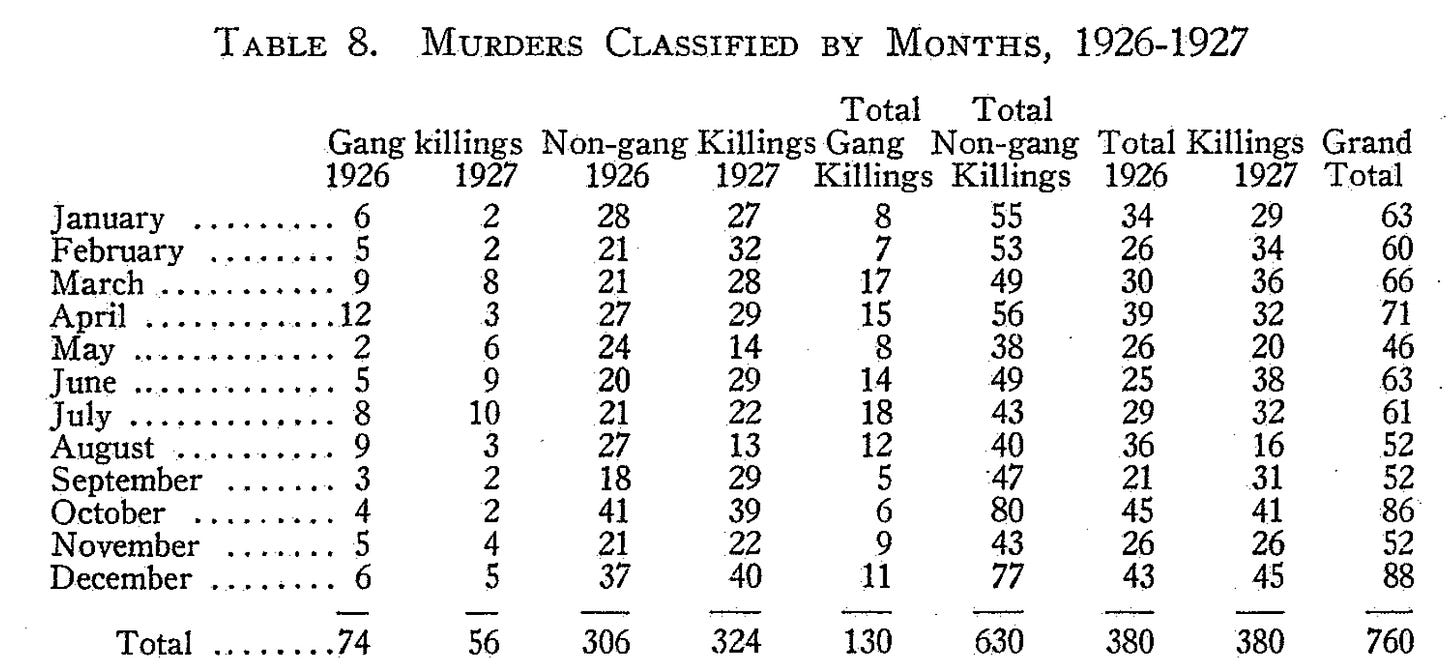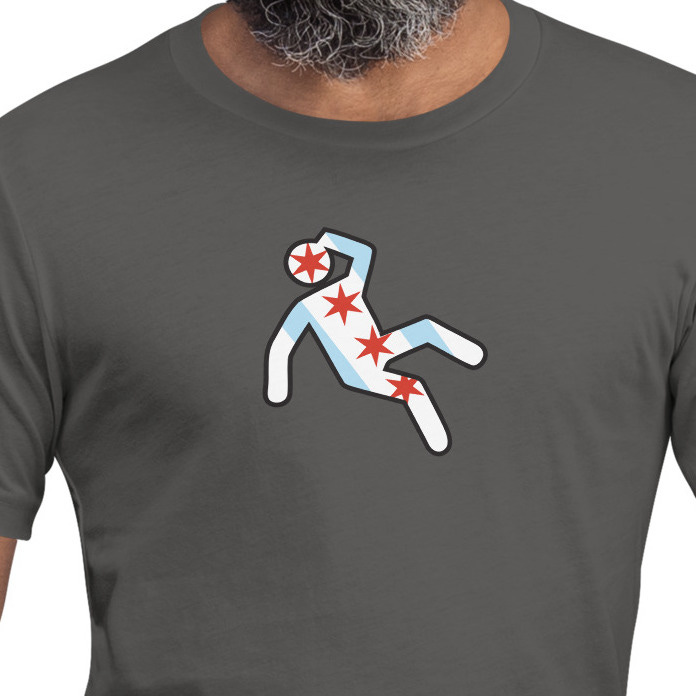The Original Chicago Mass Shooting
94 years ago today seven members and associates of Bugs Moran's North Side Gang were gunned down in a garage at 2122 N. Clark St. in Lincoln Park.
"These murders went out of the comprehension of a civilized city, the butchering of seven men by open daylight raises this question for Chicago: Is it helpless?" - Chicago Tribune, February 16th, 1929
Aside from being better dressed, not much has changed in the subsequent 94 years. As of today, we've already recorded 61 homicides this year, which is nearly 9 times more than what the massacre tallied. Last year we saw the equivalent of 105 St. Valentine's Day Massacres but the average person would struggle to name a single victim or location.
While we’ve never recorded seven homicides at the same location in our 10 years of tracking this nonsense, we came close on February 2nd, 2016:
A co-worker's concerns about a man who failed to show up at work led to a grisly discovery Thursday afternoon on Chicago's Southwest Side — six bodies found inside a tidy brick home on a quiet street in the Gage Park neighborhood.
Chicago police officers who arrived at the home at 1 p.m. for a well-being check found no signs of a break-in but spotted a body on the floor just inside the home. A search revealed the scope of the carnage — five other victims, including at least one child, had been slain. (full story)
Unlike the 1929 massacre where no one was convicted, the 2016 massacre did result in a conviction which even the casual follower knows is a rarity:
Investigators suspected at the time that the killer or killers knew the victims, because none of them were found restrained.
Four months later, police arrested Uribe and his then-girlfriend, Jafeth Ramos. They were charged with six counts of murder each.
Authorities said Uribe, a cousin and nephew of the victims, tried to take money from his family – but the robbery morphed into a rampage. (full story)
Another parallel to today is that the code of silence (or “snitches get stitches” or “no talking”) was alive and well back then too. Frank Gusenberg, who was the only one of the seven to survive the attack, told the cops "nobody shot me". He died three hours later from 14 bullet wounds. Today he'd be labeled as being 'uncooperative'.
Then and Now
Back in 1929, the Illinois Crime Survey was released and a part of the massive tome was 50 pages of Chicago-related homicide data for 1926 and 1927. The way they did things back then was slightly different than today, but the definition of a homicide today is no different than in 1929:
In its broadest sense, "homicide" is defined in law as the killing of one person by another, but is popularly and erroneously understood to be limited to murder, and murder in turn is immediately associated in the mind of the average person with machine guns, sawed-off shotguns, pistol fights, pay roll robbery holdups and gang warfare. This is especially true of killings in Chicago. Homicide may perhaps best be described as the destruction of the life of one human being by the act, procurement, or culpable omission of another. It is either justifiable or excusable and, therefore, lawful; or it is felonious homicide, as in cases of murder and manslaughter.
Hence, our pinned Tweet would have held true back then as much as it does today.
However, 1929 cast an even wider net by counting homicides that today would be considered legal (abortions) and accidents (auto manslaughters). As such, a very dapper 1926-27 HeyJackass! using 2023’s methodology would have recorded 584 homicides in 1926 and 546 in 1927. Not quite the Tommy Gun-riddled killing fields as portrayed by pop culture.
If we look at just murders assuming the CPDs of the two periods would be on more or less the same page, the murder trend of 1926-27 would be considered a huge “crime is down” moment if it were today.
Lori’s reelection would be a lock if any recent year came in at 380.
As for public attitudes towards violent crime, it would appear as if the public of the 1920s wasn’t all that different than the public of today. As long as IT happens over there and not over here… whatever.
Finally, two stats from today as compared to today’s anniversary:
44 days in the last 10 years have recorded at least seven or more homicides for a total of 349 killed
May 31, 2020, tallied 18 homicides or 2.5x what 2/14/29 posted - likely the most ever recorded in Chicago’s history
Download the homicide section of the Crime Survey if you’re interested in how things played out back then.
10 Years of Chalkie
Fun fact: the Chicago flag of 1929 would have had only two stars instead of four. Wonder if Al would have gone for an embroidered Chalkie lapel? We don’t see him as a T-shirt kind of guy.
If you’ve made it this far, thanks for reading. Our goal is to push out one long form post a week in addition to our regular stats focused posts. Thanks and remember “We don't want nobody nobody sent”.











Not counting Mr. Gusenberg's delayed expiration, the only survivor was John May's German Shepherd named 'Highball'. Reportedly, it was Highball's barking and whining that caused people to investigate the garage.
1929